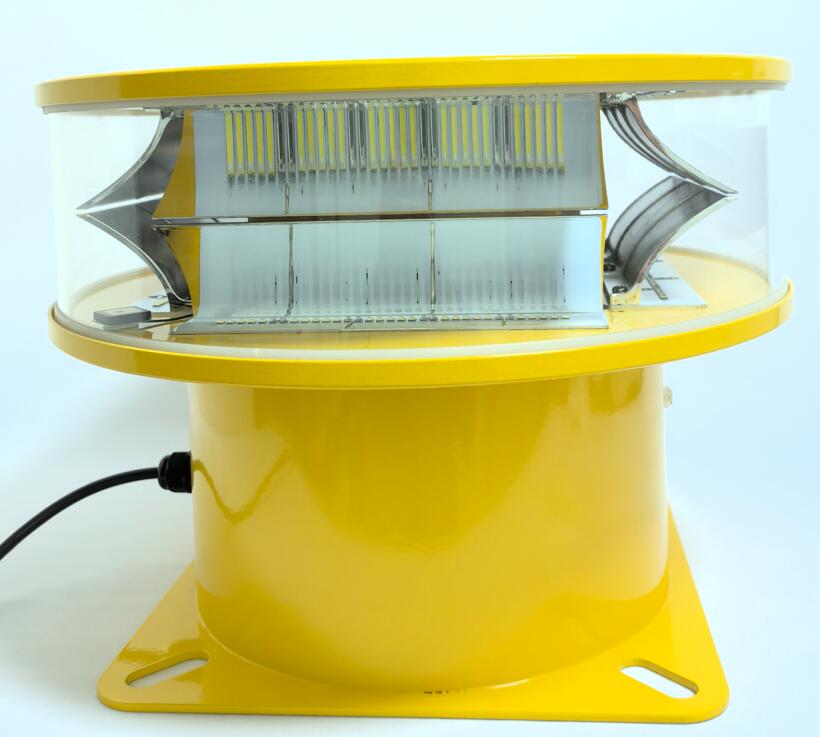The rapid expansion of urban infrastructure and the increasing number of tall structures—such as skyscrapers, telecommunication towers, and wind turbines—have made aviation safety a critical concern. Among the essential safety measures, high intensity aviation obstruction lights play a pivotal role in preventing collisions between aircraft and man-made obstacles. These lights ensure visibility in all weather conditions, day or night, safeguarding both pilots and the general public.
This article explores the significance, working principles, and technological advancements of high intensity aviation obstruction lights, highlighting their indispensable role in modern aviation safety.
The Importance of High Intensity Aviation Obstruction Lights
Aviation obstruction lights are categorized into low, medium, and high intensity based on their brightness and visibility range. High intensity aviation obstruction lights are specifically designed for tall structures exceeding 150 meters (500 feet) or those located in densely populated flight paths. Their primary functions include:
Enhanced Visibility – Emitting powerful flashes, these lights ensure that pilots can spot obstacles from long distances, even in low-visibility conditions such as fog, rain, or darkness.
Regulatory Compliance – International aviation authorities, including the FAA (Federal Aviation Administration) and ICAO (International Civil Aviation Organization), mandate the use of obstruction lights on tall structures to prevent accidents.

Collision Avoidance – By marking hazardous structures, these lights reduce the risk of mid-air collisions, particularly in areas with high air traffic.
How High Intensity Aviation Obstruction Lights Work
High intensity aviation obstruction lights operate using advanced lighting technology to deliver optimal performance. Key features include:
High-Powered LED or Xenon Strobes – Modern systems utilize energy-efficient LEDs or xenon flash tubes to produce intense, short-duration flashes that are easily distinguishable from background lighting.
Automatic Brightness Adjustment – Some models incorporate photoelectric sensors to adjust light intensity based on ambient conditions, ensuring compliance with aviation regulations without causing glare.
high intensity aviation obstruction light
|
Dual or Redundant Lighting Systems – To maintain reliability, critical installations often feature backup power supplies or dual lighting mechanisms to prevent failure.
Synchronization Capabilities – In multi-light setups, synchronization ensures that flashes occur simultaneously, improving recognition by pilots.
Applications of High Intensity Aviation Obstruction Lights
These lights are indispensable in various industries where tall structures pose a risk to aviation:
Telecommunication Towers – Essential for mobile network and broadcast towers, which are often located in remote or elevated areas.
Wind Turbines – As wind farms expand, their towering structures require high-intensity lighting to prevent collisions with low-flying aircraft.
Skyscrapers and High-Rise Buildings – Urban development necessitates obstruction lighting to protect helicopters and low-altitude flights.
high intensity aviation obstruction lights
|
Bridges and Power Lines – Long-span bridges and high-voltage transmission lines also utilize these lights to mark potential hazards.
Technological Advancements
Recent innovations have significantly improved the efficiency and reliability of high intensity aviation obstruction lights:
Solar-Powered Systems – Reducing dependency on grid electricity, solar-powered lights are ideal for remote installations.
Smart Monitoring Systems – IoT-enabled lights can transmit real-time operational data, allowing for predictive maintenance and immediate fault detection.
Aircraft Detection Technology – Some advanced systems use radar or transponder signals to activate lights only when an aircraft is nearby, minimizing light pollution.
High intensity aviation obstruction lights are a cornerstone of modern aviation safety, ensuring that tall structures do not become invisible threats to aircraft. With continuous advancements in lighting technology and smart monitoring, these systems are becoming more efficient, reliable, and environmentally friendly.
As urbanization and air traffic continue to grow, the role of high intensity aviation obstruction lights will remain crucial in maintaining safe skies for future generations. Regulatory bodies, engineers, and developers must collaborate to implement these solutions effectively, minimizing risks and enhancing global aviation safety standards.

